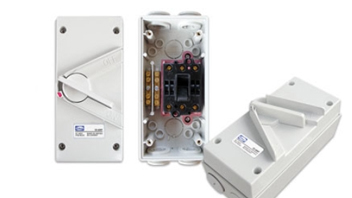Waterproof isolators offer several key advantages, particularly in environments where exposure to moisture, dust, or harsh conditions is a concern. Here are the primary benefits:

Prevents Electrical Hazards: Sealed construction minimizes the risk of short circuits, electric shocks, or arcing caused by water ingress.
Reduces Fire Risks: Limits moisture-induced corrosion or insulation degradation that could lead to overheating.
Water and Dust Resistance: High IP ratings ( IP65–IP68) ensure performance in rain, humidity, or submersion.
Corrosion Resistance: Materials like stainless steel or UV-stabilized plastics withstand saltwater, chemicals, and outdoor weathering.
Temperature Tolerance: Operates reliably in extreme temperatures ( -25°C to +70°C).
Durable Construction: Long lifespan with minimal wear from environmental stressors.
Sealed Enclosures: Prevent internal contamination by dirt, dust, or moisture, reducing the need for frequent cleaning or repairs.
Low Maintenance: Requires fewer inspections compared to non-waterproof isolators.
Flexible installation method: supports DIN rail installation, modular design, etc., and the installation process is simple and fast.
Easy to maintain: pluggable terminals and quick connection interface are used to reduce the difficulty and cost of maintenance.
Construction industry: As an isolation layer between the waterproof layer and the rigid protective layer, it can prevent thermal expansion and contraction from damaging the waterproof layer.
Solar industry: Used for DC isolation of photovoltaic arrays, supporting on-load disconnection and safe maintenance.
Industrial and electronic fields: As a waterproof isolator, it ensures reliable connection in harsh environments.
Waterproof isolators combine safety, durability, and adaptability, making them ideal for critical applications where moisture, dust, or harsh climates threaten electrical systems.
GET A QUOTE